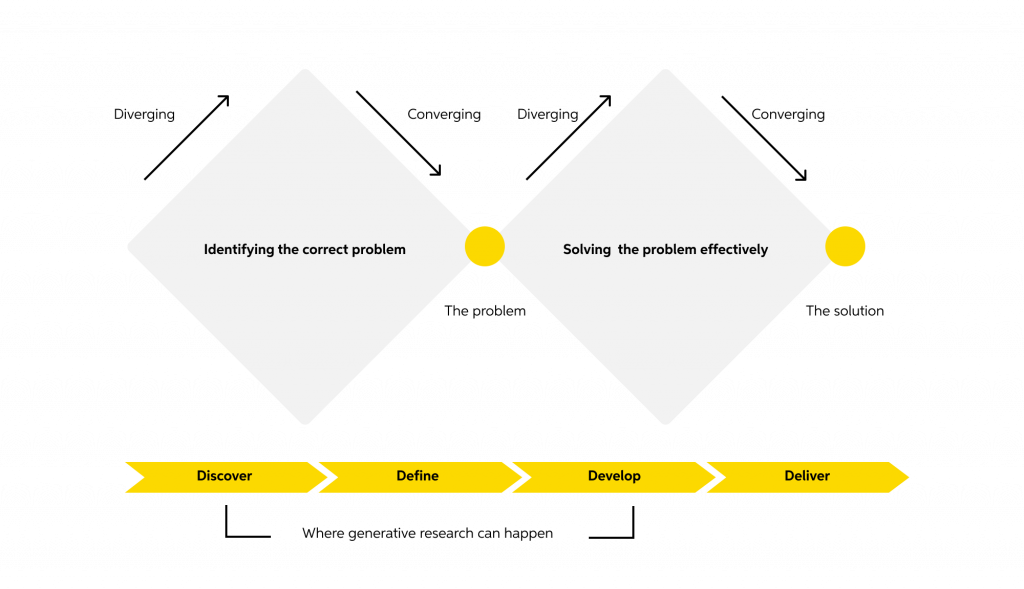Validating the problem before you consider what to solve ensures you’re solving the right problem, with the right solutions. That’s where generative research becomes your most important first step in deciding product or service outcomes.
Using a generative research approach at the beginning stages of your product or service process helps ensure successful user-centred, innovative outcomes from a design sprint or project.
Whether it’s a team, leadership, or external workshop, interviews or diary studies, these approaches help your team define the problem you’re working to solve, ensuring the solution is focused on impactful user needs and organizational objectives.
Learn more about our research approach
What is generative research?
Also known as discovery research or exploratory research.
The generative research process is, at its core, focused on big-picture research and thinking to explore and confirm the problem and problem space before settling on a narrow objective for your product or service.
These processes involve open-ended explorations of needs, behaviours, and pain points with users and stakeholders to uncover the core problem that your service or product aims to solve.
Generative research typically involves direct research with users or other stakeholders, such as interviewing or different types of open-ended approaches.

Research methods you can leverage in generative research
There are numerous generative research methods, but below are some that you may want to consider using in your team’s research.
- User interviews
- Field research/in situ ethnographic research
- Diary studies
- Focus groups
- Workshops
And many more!
The UX Research Field Guide from User Interviews is a great in-depth introduction to each of these methods and how to implement them.
Generative research: key for your product or service’s success
Implementing a generative research phase into your design/development sprints reduces risks of investing in the wrong solutions.
Generative research can be used to:
- validate or disprove assumptions with users
- identify current user behaviour and potential future use cases or design opportunities
- validate the impact of potential solutions
- clarify the problem space you’re working in
Ultimately, leveraging generative research throughout the design process will help confirm, validate, and focus on the most impactful problem and related opportunities before investing too many resources in an ill-suited solution.
Need help getting started with user research?
We can help your team leverage research for better products and services.